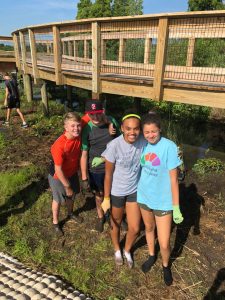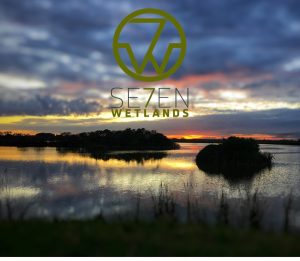Why would a nature lover want to visit a wastewater treatment plant?

If you’re asking about Se7en Wetlands in Mulberry, it’s because of the birds, bobcats and butterflies – along with lots of alligators, frogs and turtles. In fact, it has so many birds that it’s become an e-bird hotspot with 120 species documented in the last 18 months.
The 1,640-acre site, once a phosphate mine, was turned into a wastewater treatment facility in 1987 when changing regulations made it impossible for the city of Lakeland to continue discharging treated wastewater into Banana Lake.
Today, approximately 10 million gallons per day of treated wastewater are further cleaned by a carefully orchestrated system that removes 90% of nitrogen to meet Advanced Wastewater Treatment (AWT) standards. The trip through seven cells takes about 100 days before flowing into the Alafia River and on down to Tampa Bay.
“It’s extremely effective and extremely low maintenance compared to more traditional AWT plants,” said Sarah Malone, wetlands manager for Lakeland Water Utilities. “We’re putting nature to work for us.”

Restoring areas like Se7en Wetland is also an important part of the Tampa Bay Estuary Program’s plan for inland habitats as sea level rise impacts coastal zones. “We’re encouraging habitat restoration in older phosphate mine areas like these in our new Habitat Master Plan update,” said Gary Raulerson, TBEP ecologist.
“If they were excavated before 1975, there was no requirement for habitat mitigation, so there is a significant restoration opportunity, especially in the headwaters of the Alafia and Little Manatee rivers,” he notes. “The water quality improvements from the project are also important to the Alafia River and Tampa Bay.”
Besides treating wastewater effectively and providing critical habitat, Se7en Wetlands is becoming an attraction for nature lovers across the region, said Julie Vogel, environmental program specialist. “In 2018, we had more than 1,000 people come through the property and made presentations to a couple of thousand more.”

When constructed, large earthen berms were built to construction seven separate cells — thus Se7en Wetlands — where phosphate was mined in the 1920s or ‘30s. The berms still remain, making it possible to route wastewater through the system with gravity, and allowing easy access by foot or automobile around the marshes and ponds that make up the system.
Two cells are currently open to the public without advance notice – the Wood stork entrance through the Lakeland Highlands Scrub and the Gopher Tortoise entrance accessible through Loyce Harpe Park. From Gopher Tortoise entrance, the easiest to access, the trail runs in a three-mile loop which includes two boardwalks and several picnic facilities.
Additionally, small groups of up to 11 people can schedule a “behind the scenes” tour with Vogel in an air-conditioned van that makes touring the entire facility more comfortable. “We’ve had Audubon field trips as well as Kiwanis and other groups set up tours, and we’ll be part of the Florida Birding and Nature Festival again this year.”

While some artificial wetlands are highly engineered, Se7en Wetlands required very little modification to function effectively. “We didn’t know as much then as we do now, so we just let nature takes its course,” Vogel said. Habitat and land management plans being developed now will formalize the long-term strategies, including removing invasive species and planting specific areas with different native species.
Over time, the entire system will be open with marked trails and facilities like restrooms and picnic areas. “There aren’t fences separating the marked trails from other areas but we’ve set it up so that emergency services can find a spot on the marked trails where they can’t on the rest of the property.”
From a wildlife perspective, a critical part of the wetlands are the small islands left by miners that are now home to nesting birds. The alligators “protect” the islands from coyotes and raccoons that can ravage nests, Vogel says. “They circle the islands and keep predators from swimming out to them.”
 And of course, the alligators benefit when any of the fledglings fall from their nests, Raulerson adds.
And of course, the alligators benefit when any of the fledglings fall from their nests, Raulerson adds.
Learn more about Se7en Wetlands and download a trail map at https://www.lakelandgov.net/departments/water-utilities/se7en-wetlands/
By Vicki Parsons, originally published July 30, 2019
